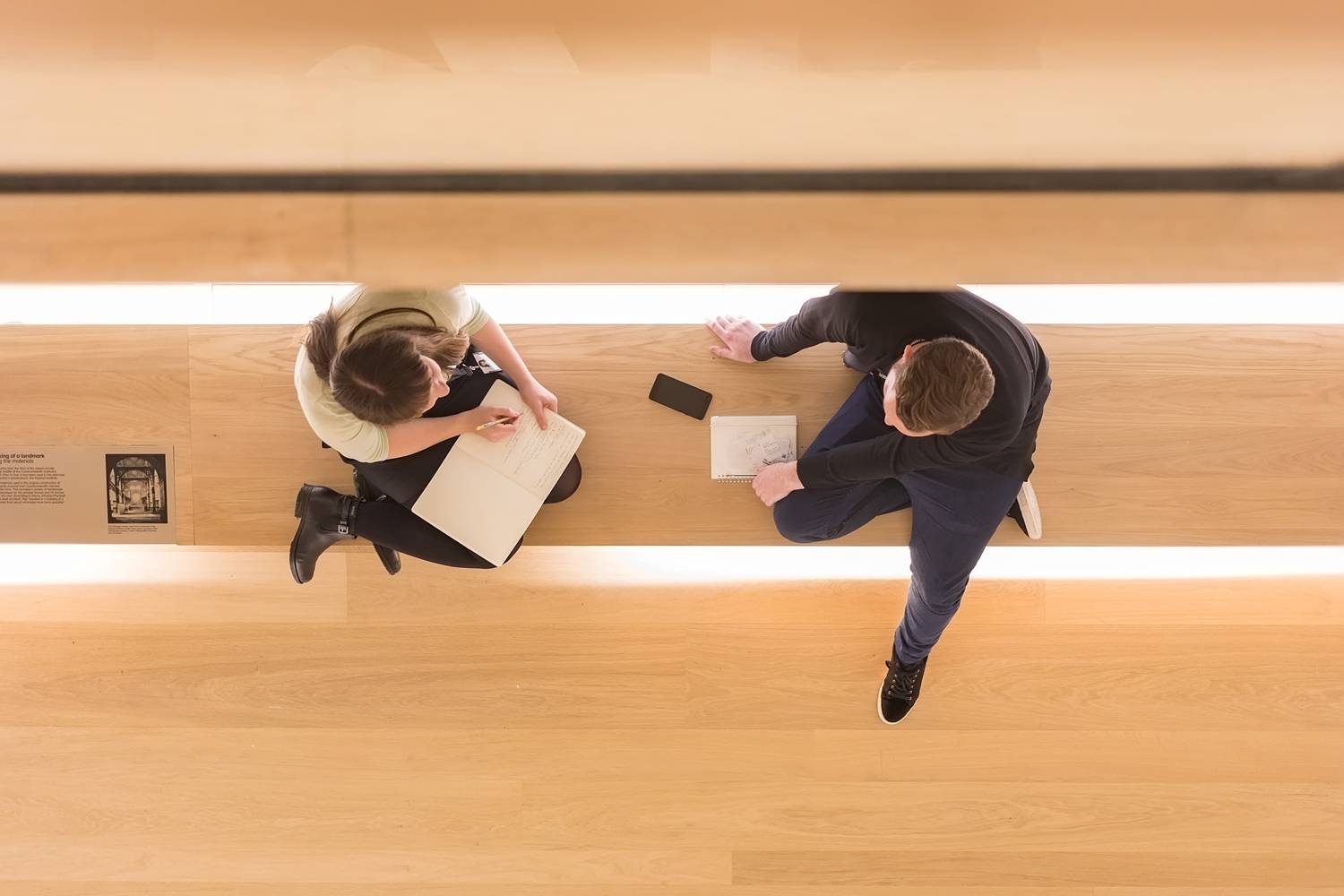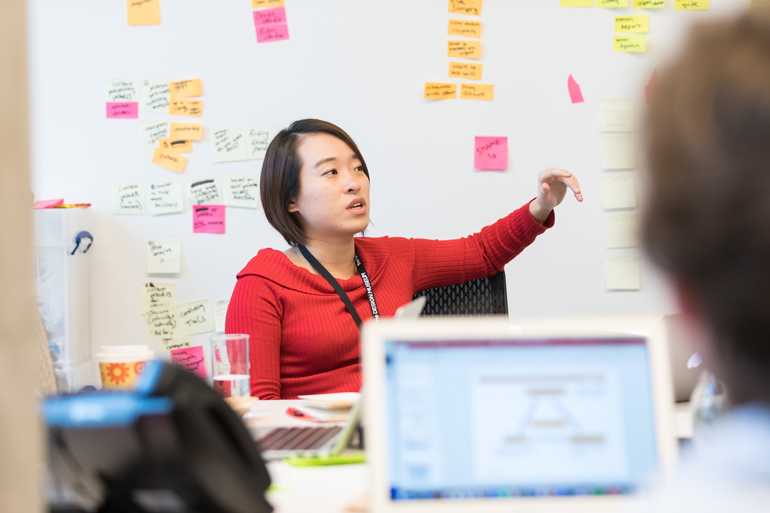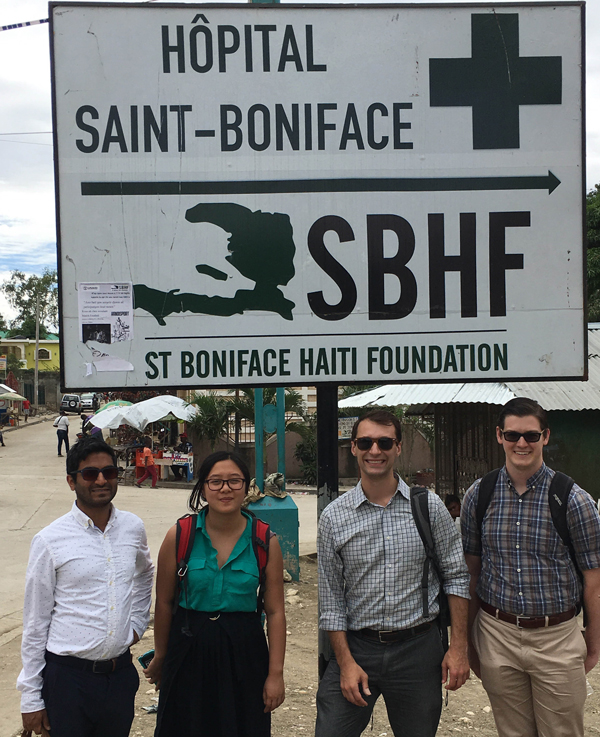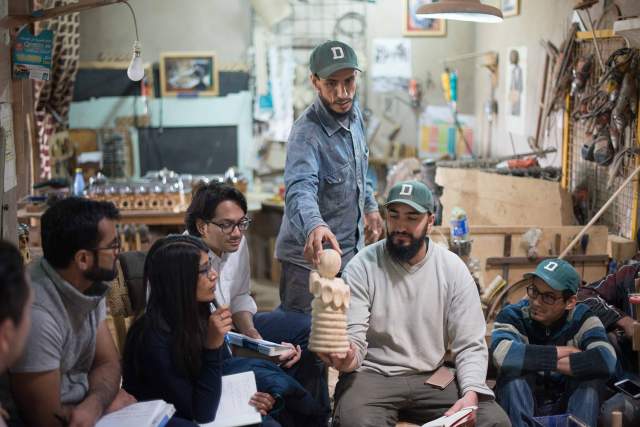In It for Impact
Two recent TuckGO projects demonstrate just how committed Tuck is to making an impact in the world—a mission the OnSite Global Consulting course has held for over 20 years

Students helped The Design Museum in London clarify its goals and developed a strategy for innovation.
In early 2018, the Design Museum of London moved to a stunning new location nearly three times the size of its former facility.
Along with the building’s sweeping roofline and grand central staircase came a new business challenge: How could the museum leverage the revenue potential of the new venue to support the museum’s curatorial ambition?
Fast-forward to a gathering with the trustees of the Design Museum, including Czech-American investor and philanthropist Zdeněk Bakala T’89 who walked into the meeting wearing a Tuck baseball cap. Celeste Bright, development director of the Design Museum, took the opportunity to ask Bakala about his connection to the school.
“That was the starting point of our discussion, and it led to Mr. Bakala saying, ‘We should bring together these two ideas—the OnSite Global Consulting course at Tuck and the Design Museum’s transition to a new space,’” Bright says.

An OnSite project with the Design Museum of London was facilitated by Zdeněk Bakala T’89.
The Design Museum’s expansion was the kind of challenge that benefits from an open-minded approach drawing on diverse experiences. Cue bringing in a team of six dynamic Tuck students with experience in areas clients would expect from a commercial firm—like financial analysis, business development, and corporate strategy—as well as in other, more unexpected areas like the arts and arts administration. The students focused on clarifying the museum’s objectives and equipping its management team with the right tools to successfully reinvent itself and innovate.
The alliance of TuckGO and the Design Museum convince me that our dedication is even more needed in this continually changing world—the never ending strive for innovation is what is helping us in identifying new issues and finding new ways to address them.
“We felt that we were getting more specialized help in a way, because of the really striking mix of experience the team had in their careers before coming to Tuck,” says Bright, who worked closely with the London team. “The answers that we got to those kinds of challenges may have been better than a commercial consulting firm, because the Tuck team wasn’t coming into the project with an off-the-shelf response.”
That enthusiasm and commitment to excellence is exactly why Bakala tapped Tuck for the job. But he also saw an opportunity for innovation and greater impact.
“My wife Michaela and I firmly believe in supporting talented young people by providing access to high-quality education and experiences,” says Bakala. “The alliance of TuckGO and the Design Museum convince me that our dedication is even more needed in this continually changing world—the never ending strive for innovation is what is helping us in identifying new issues and finding new ways to address them.

A team of students worked with St. Boniface Hospital in Fond-des-Blancs, Haiti for their OnSite course.
Not every organization has the resources to host an OnSite team and, thanks largely to donor gifts to TuckGO, Tuck has made a commitment to ensure that the nonprofit sector is represented in its portfolio. An example of this is another OnSite project this year that focused on supply chain optimization at St. Boniface Hospital in Fond-des-Blancs, Haiti. Team members slept in shared rooms adjacent to the maternity ward, an arrangement that gave them a visceral appreciation for the importance of the hospital’s work, says Dan Grande T’18.
“In the middle of the night we would hear women giving birth,” he says. “And we were right outside the place where the hearse would come if someone had passed away during the night.”
The OnSite team worked to analyze and improve the hospital’s supply chain, which faces a host of challenges ranging from infrastructure and inventory control to customs bureaucracy and surging demand. St. Boniface has grown from a one-room clinic to a full-service hospital that in 2016 served more than 100,000 patients, despite the ravages of Hurricane Matthew. In such conditions supply shortages are rampant, Grande says.
Students take the concepts and theories they learn here at Tuck and put them to work in real time on consulting projects that can have a far-reaching impact. It’s an amazing opportunity—one that can transform how they understand business and that allows them to experience firsthand what it takes to lead across cultures.
“When a system like that is so challenged, even small improvements can make a monumental difference. I’m not sure I really knew going in how impactful you could truly be in that type of environment,” says Grande, who will join the consulting firm EY-Parthenon after graduation.
OnSite Global Consulting recently celebrated its 20th year. Its first project took place in the summer of 1997, when a handful of Tuck students traveled to Vietnam and Indonesia to perform an in-depth business analysis for corporate hosts Disney and Nike. Since then, OnSite has taken 1,279 students to nearly 60 countries around the world to head their own consulting projects—226 to be exact.
“Students take the concepts and theories they learn here at Tuck and put them to work in real time on consulting projects that can have a far-reaching impact,” says OnSite director Kerry Laufer. "It’s an amazing opportunity—one that can transform how they understand business and that allows them to experience firsthand what it takes to lead across cultures.”

